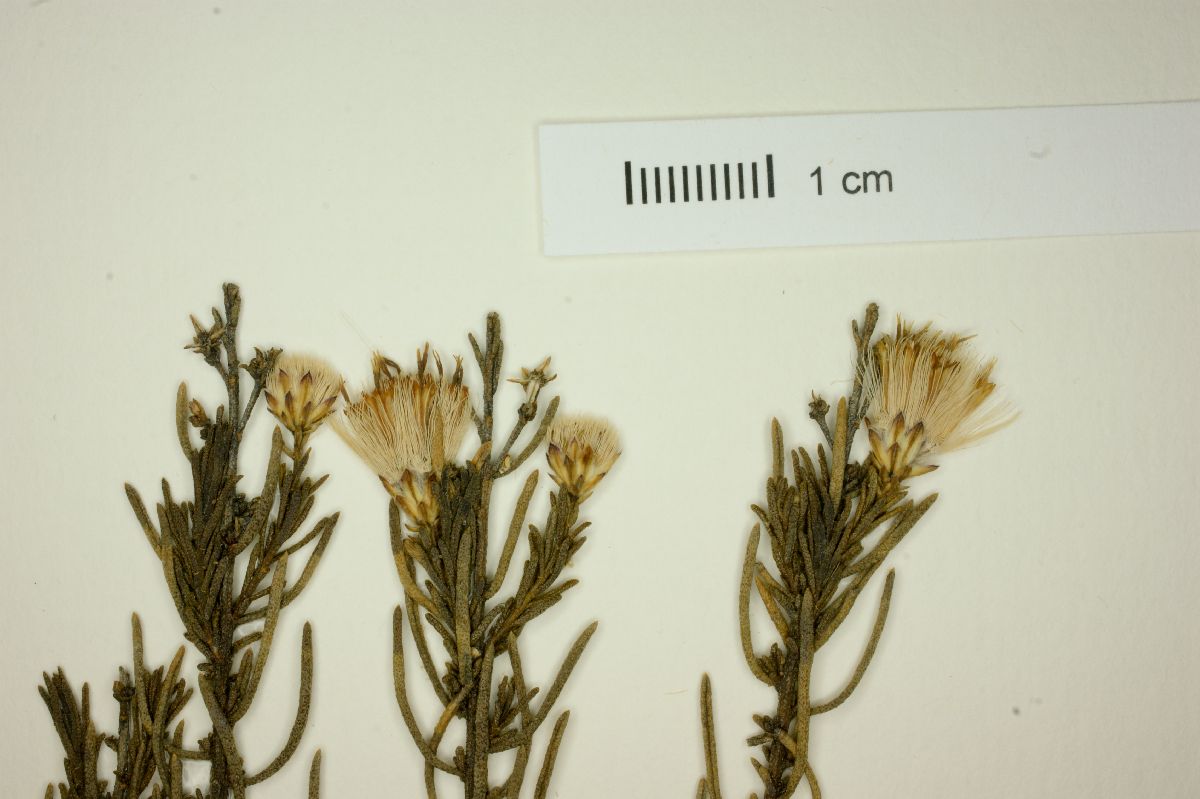
|
Family: Asteraceae |
Shrubs (trees in Ericameria parishii var. parishii), 10-500 cm. Stems usually erect to ascending, rarely prostrate, fastigiately or intricately branched (bark typically tan to reddish brown, becoming gray, twigs usually green to gray or yellowish), glabrous or sparsely to densely hairy (often tomentose), often gland-dotted, sometimes resinous or stipitate-glandular. Leaves (mostly persistent) cauline (often crowded, axillary leaf fascicles sometimes present); petiolate or sessile; blades (green to grayish; midnerves obscure to prominent, sometimes with 2 collateral veins), cuneate, elliptic, filiform, lanceolate, linear, oblanceolate, obovate, or spatulate (adaxially sulcate, concave, or flat), margins entire (sometimes undulate or crisped; apices acute to rounded or retuse), faces glabrous or sparsely to densely hairy (often tomentose), often stipitate -glandular, sometimes gland-dotted or resinous. Heads radiate or discoid, borne singly or in cymiform or racemiform, sometimes highly branched and paniculiform or thyrsiform, arrays. Involucres campanulate, cylindric, hemispheric, obconic, or turbinate, (4-19+ ×) 2-18 mm. Phyllaries 8-60 in 2-7 series (often in vertical ranks), 1-nerved (midnerves obscure or evident, sometimes enlarged subapically and glandular) ovate, lanceolate, or elliptic, strongly unequal to subequal, outer often herbaceous or herbaceous-tipped, otherwise mostly chartaceous, (apices erect, spreading, or reflexed, acute or acuminate to cuspidate or obtuse), faces sometimes stipitate-glandular, often resinous. Receptacles slightly convex, pitted, epaleate. Ray florets 0, or 1-18, pistillate, fertile; corollas usually yellow (white in E. gilmanii and E. resinosa), (laminae elliptic to oblong, apices shallowly notched or toothed). Disc florets 4-70, bisexual, fertile; corollas usually yellow (white in E. gilmanii and E. resinosa), tubes shorter than narrowly funnelform to campanulate throats, lobes 5, erect to spreading or reflexed, deltate to triangular; style-branch appendages lanceolate to subulate. Cypselae (tan to reddish brown) usually prismatic, sometimes cylindric, ellipsoid, obconic, or turbinate, 5-12-ribbed, faces glabrous or sparsely to densely hairy, sometimes gland-dotted; pappi persistent or tardily falling, of 20-60 whitish or tan to reddish, subequal, fine, barbellate, apically attenuate bristles in Two species, Ericameria juarezensis and E. martirensis, are known only from mountains in northern Baja California, Mexico. The plants inhabit rock outcrops and dry, stony or sandy substrates of western North America. Some taxa are widespread and codominant in scrub communities of that region; others have restricted distributions. Systematic and phylogenetic investigations have resulted in the expansion of Ericameria to include certain taxa previously assigned to Chrysothamnus as well as taxa treated in Haplopappus. Except for E. laricifolia, taxa in Texas previously included in Ericameria are but distantly related and have been excluded from the genus. In the descriptions below, short-stipitate-glandular refers to hairs with stalks less than 1 / 2 as long as the diameter of the distal gland, long-stipitate-glandular to hairs with stalks clearly visible, 1-3-times longer than the diameter of the distal gland.
|
This project was made possible in part by the Institute of Museum and Library Services [MG-70-19-0057-19].
Powered by Symbiota



